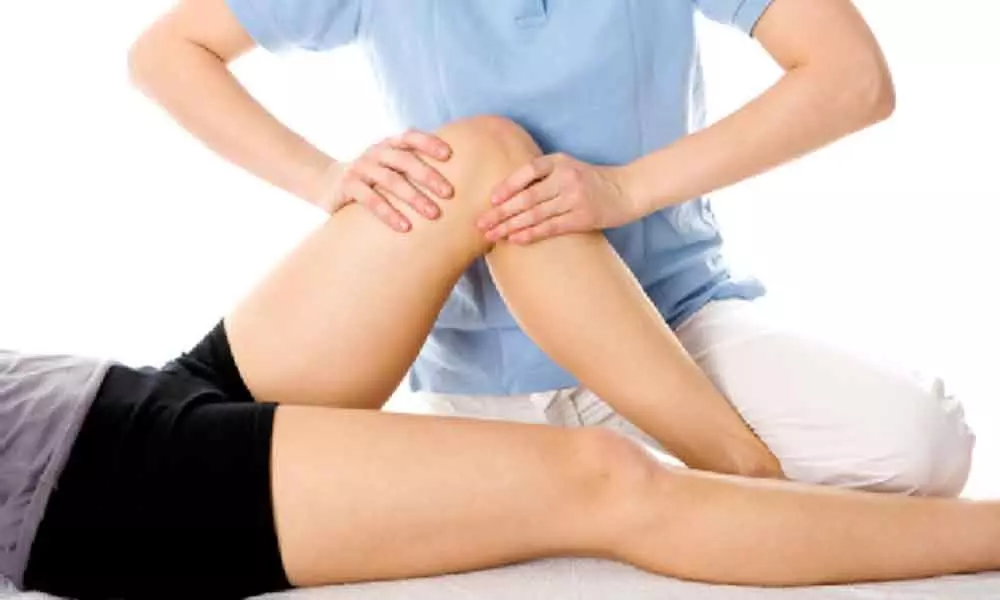Know your pain better

What are the causes of a locked knee, read on to find out
Knees are some of the body's most hardworking joints, bearing much of the body's weight.
It's very concerning if you can't bend or straighten your legs. You might feel that your knee or knees have locked into place.
This condition is called a "locked knee." A locked knee freezes in a straight or bent position producing pain and limiting motion. Dr (Prof.) Amite Pankaj Agarwal who is Director and Unit Head of Orthopaedics & Joint Fortis Hospital in Shalimar Bagh in the Capital explains what the causes are and what you can do about it.
Causes for knee locking
There are two types of knee locking: a true knee lock and a pseudo knee lock. A true knee lock occurs when something in your knee joint gets stuck into one position and you cannot move it at all.
• True knee locking
• True knee locking can be caused by:
• A meniscus tear
Two menisci are located in the knee that looks like a bucket handle or the letter "C." These menisci function as shock absorbers for the joint, help distribute body weight, provide joint stability and keep the bones from rubbing together.
Meniscus tears are one of the most common types of knee injuries. They can occur when you perform an activity where you forcefully twist or rotate your knee, especially when you have your full weight on it.
Knee can lock when the torn part gets in the way of knee moving correctly. Besides knee locking, symptoms include:
• a popping sensation
• swelling
• stiffness
• pain, especially when trying to twist or rotate the knee
• difficulty straightening the knee fully
A loose body
This occurs when a piece of knee bone breaks off due to:
• a fall
• degenerative joint disease
• chip fracture
• torn cartilage (the membrane covering your bones inside a joint)
• a foreign object from a past surgery
The bone fragment may float inside the knee joint. Your knee can lock if this loose body gets caught and stops the knee from moving normally. Other symptoms of a loose body include:
• pain and swelling that comes and goes
• feeling the loose body as a small bump or shard when you touch your knee
• chronic stiffness of knee
An ACL tear
ACL or anterior cruciate ligament is a ligament inside your knee joint which keeps the knee stable while walking. Sometimes sudden deceleration forces can lead to tearing of ACL which in-turn can get stuck in the knee joint leading to a locked knee.
Pseudo knee locking
If you have pseudo knee locking, you feel as though you can't move your knee because you are in so much pain. However, there isn't something in your knee preventing you from moving it.
This is your body causing the muscles around the knee to get a contract triggered by pain in or near your knee. The main symptom is a pain, accompanied by an inability to move the knee. Other symptoms include:
• catching sensations
• brief locking sensations
• free or open sensations in the knee
Causes for pseudo locking include:
• Knee injury
• This can be caused by:
• a fracture
• dislocation or subluxation, especially of the kneecap bone
• bursitis
• tendonitis
• tendon tears
Diagnosing reason for locking the knee
An examination can typically determine whether or not your knee locking is due to pain or a mechanical issue. X-rays may help identify the exact cause of a locked knee but meniscal tears and smaller fragments may not be visible on x-ray.
Magnetic resonance imaging (MRI) captures a 3D image of the inside of the knee joint to diagnose the cause of a locked knee. MRI can often pinpoint problems not visible on X-ray.
Treatment of locking the knee
Treatment of a locked knee is determined by the cause of the problem. Initial treatment of meniscal tears should be aimed at controlling swelling and inflammation.
R.I.C.E. therapy, which stands for rest, ice, compression, and elevation, along with anti-inflammatory medications and physical therapy should be taken care of.
Some patients can then gradually return to their normal activities, while others require surgical treatment.
Arthroscopic knee surgery is a minimally invasive procedure performed through a series of small incisions.
This allows us to visualize the knee joint from inside and diagnose and treat the injury to the meniscus. After surgery, a period of rest is needed for the knee to heal.
Loose fragments are also typically removed through an arthroscopic procedure. Very large bodies may require an open procedure for removal.
Building and maintaining muscle strength in the knee and leg muscles can help prevent injuries and conditions that can lead to a locked knee.
Talk to your doctor about various preventative exercises to help keep your knees healthy and strong.

















